
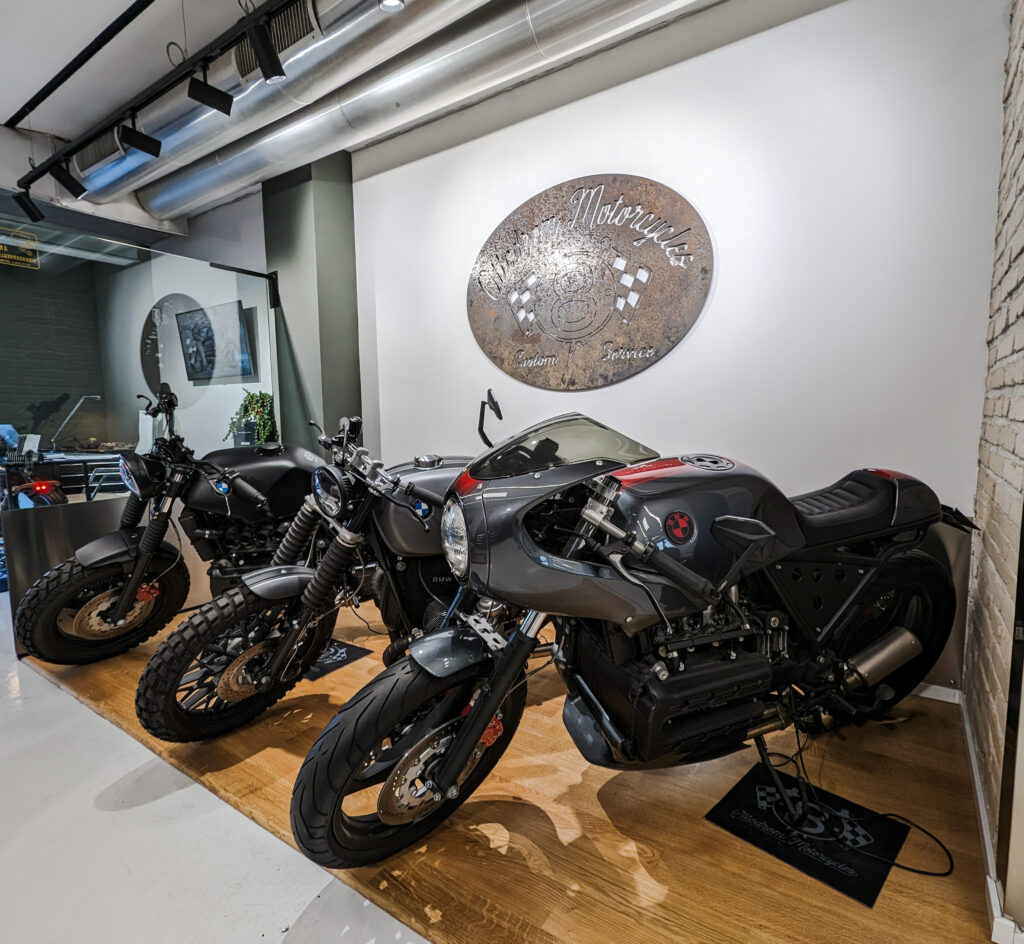
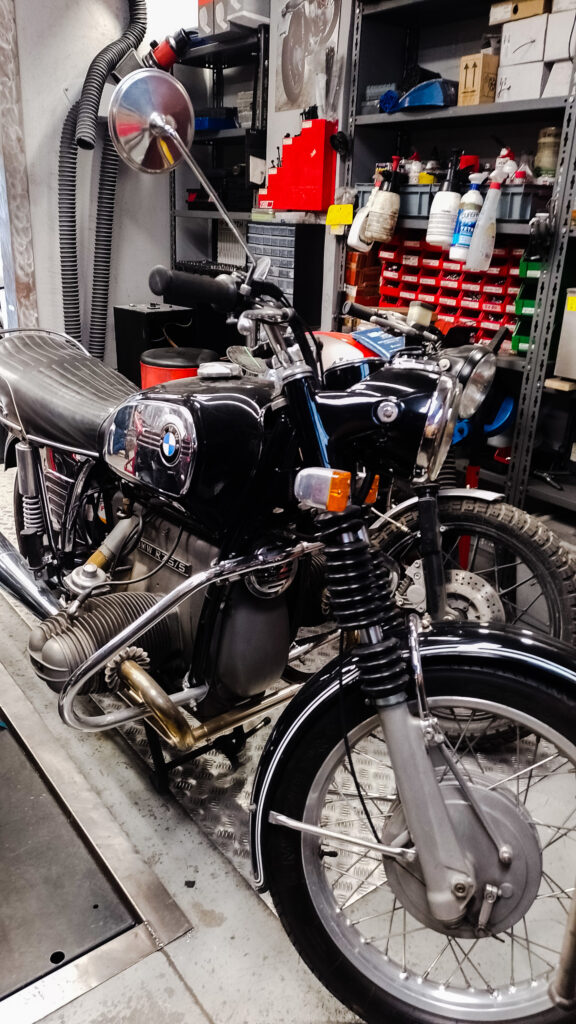
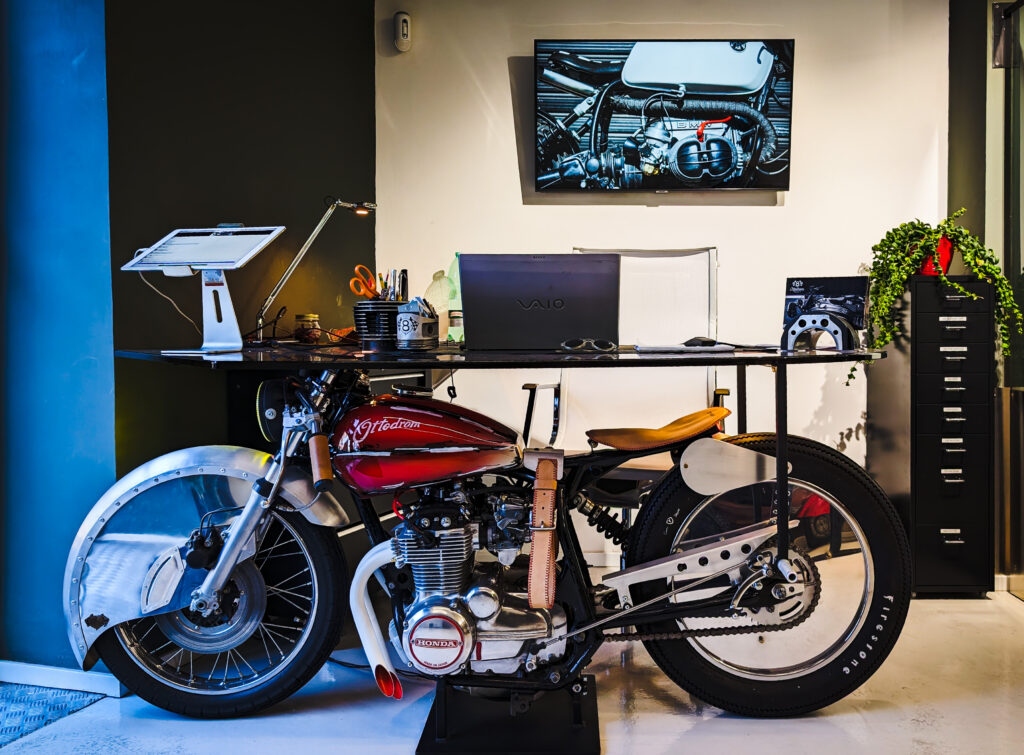
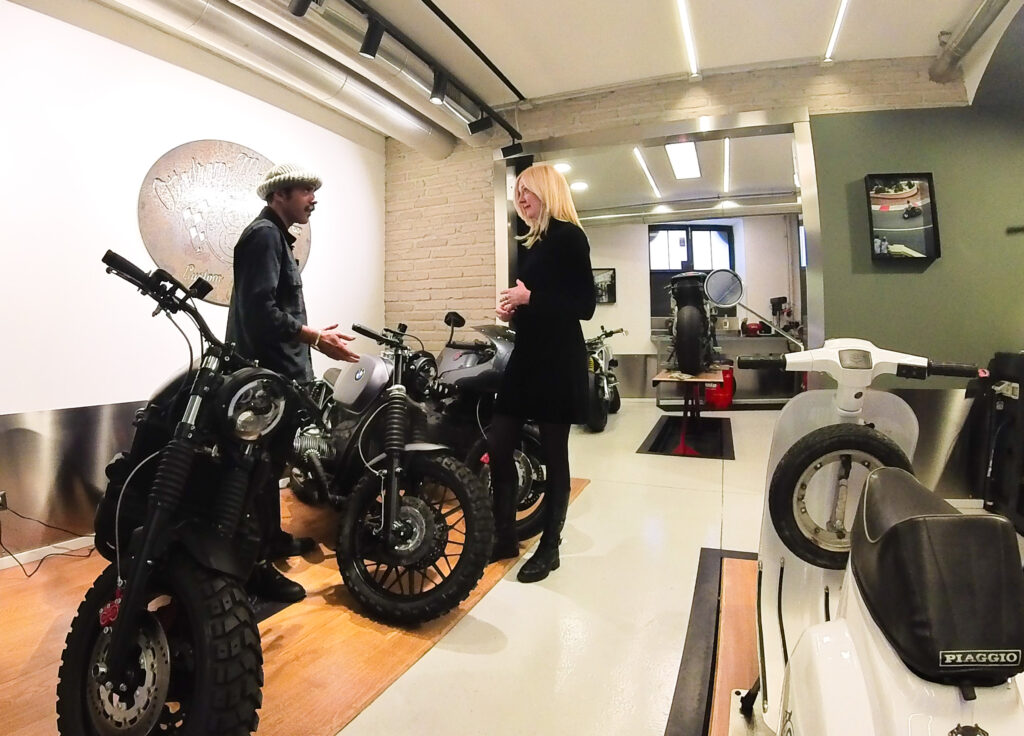
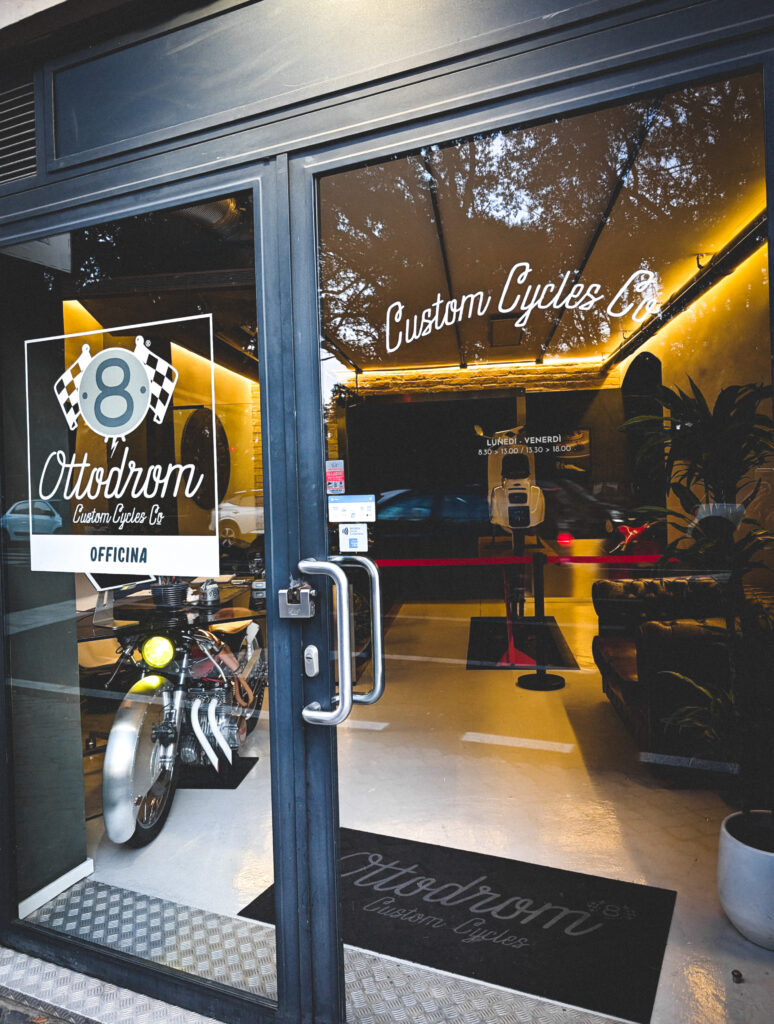

[1] Interview in Italian by Author on February 2, 2024 at Ottodrom, Via Pinciana 41-45 Rome, Italy. Translations by Author. https://www.ottodrom.com/
[2] This year the Eternal City Motorcycle Show will take place on September 28-29 at the Palazzo dei Congressi in EUR.
[3] See this article in Italian from Motociclismo for more about laws regarding vehicle modifications. https://www.motociclismo.it/dal-codice-della-strada-alle-modifiche-della-moto-cosi-si-puo-mettere-mano-al-proprio-gioiello-1-controlli-a-tappeto-moto-2946
[4] See this article in Italian about pollution restrictions and what motorcyclists are doing about them https://www.inmoto.it/news/attualita/2023/07/28-6558397/roma_e_ztl_azione_legale_collettiva_contro_i_divieti
[5] This article in Italian compares the two certifications https://www.moto.it/news/moto-d-epoca-come-chiedere-l-iscrizione-al-registro-storico-per-ottenere-tutti-i-vantaggi.html

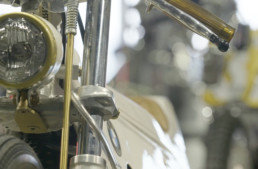
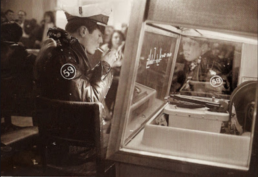

Ahhhh … le custome motocicletta Italiano . Che bene . Che belle …. che mostro ! 😉
Amazing considering the number of Italian custom bike builders how seldom they seem to be featured … on any site ( PB BE and SiL included )
Especially the builders specializing in non Italian bikes . Hmmm …
Oh well … a little here does help …. even more would be better !
Ciao …. 😎
In addendum to the above ;
When digging into the custom M/C scene in the home of my forefathers ( and where I have dual citizenship thanks to the previous Premier ) …
… the one thing you need to know is ….
…There are two distinct aspects of Italian business ….
The legitimate above ground above board pays their taxes and follow the regs side … of which Ottodrom is obviously a part of ….
… and …
The entire below ground … don’t pay their taxes … ( bleep ) the regs and to hell to whoever doesn’t like it side ..
Which is deep ….. very deep …. very well populated …. and in reality …. no one in Italian government really cares about … as long as they don’t make a level ten pain in the ( bleep ) of themselves .
Finding them ? No big deal …. they’re in your face if you know where to look …. hiding in very plain sight .
Interviewing them ? Hell … as long as you stick to their limits …. they’re more than glad to show off heir wares .
And dare I say this ? As good as the legitimate side is … the ‘ outlaw ‘ side is even better .
So take a look …. have a ball …. bring back some incredible articles and photos
Ciao ….
😎